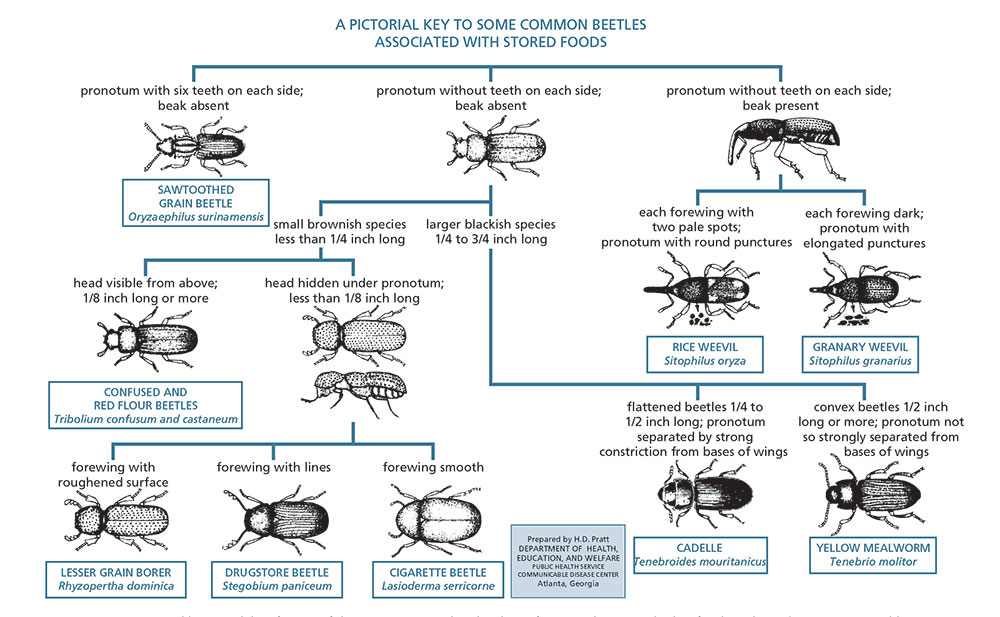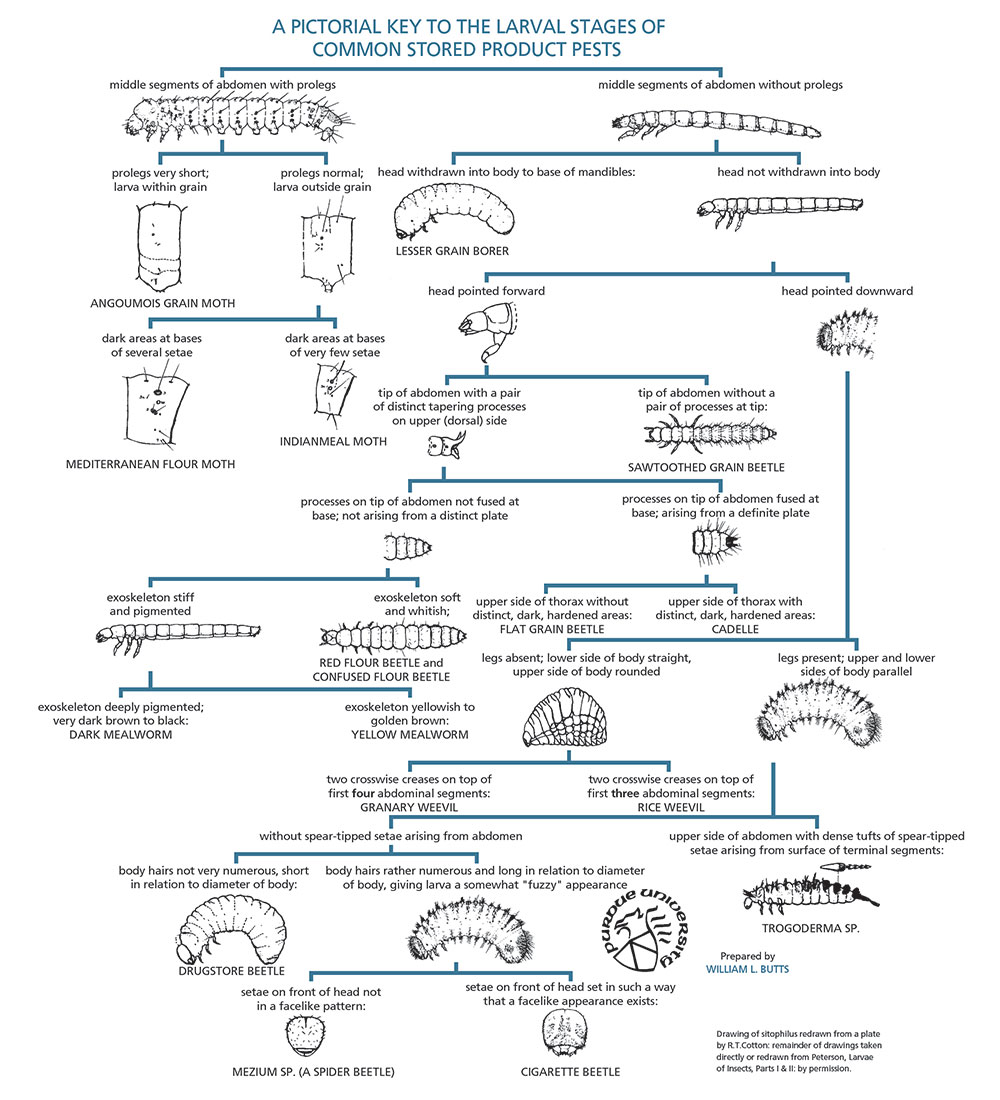Author’s Note: Information is taken from Truman’s Scientific Guide to Pest Management Operations, available online at the PMP Bookstore.
Pantry pests, stored food pests — no matter what terminology you use, the panic for your residential customers is nearly always the same. Unlike termites destroying the house or bed bugs altering their sleep patterns, this category of pests brings its own brand of terror: Food contamination. For your commercial customers — whether it’s at the manufacturer, distribution or retail level — it’s a PR nightmare.

(Select the image to enlarge it.)
Figure 11.1: A pictorial key to adults of some of the more common beetles that infest stored grain and other food products.
Image: Truman‘s, Ch. 11 p. 273; U.S. Public Health Service, Communicable Disease Center, Atlanta
Truman’s breaks stored product pests (SPP) into five categories:
- Internal feeders are insect larvae that feed entirely within the kernels of whole grain and palletized product. Because of this, they can remain undetected until adults emerge from the kernels. Examples include the rice (black) weevil, granary weevil, Angoumois grain moth and lesser grain borer.
- External feeders feed on the outside of the grain. They may also chew through the outer seed coat and devour the inside. Examples include the drugstore beetle, cigarette beetle, cadelle, cabinet beetle (Trogoderma spp.) and Indianmeal moth (IMM).
- Scavengers feed on grain only after the seed coat has been broken, either mechanically or by some other insect. Examples include the confused flour beetle, red flour beetle, flat grain beetle, sawtoothed grain beetle and Mediterranean flour moth.
- Secondary pests feed only on materials that are deteriorating, damp and have some mold growth present. Some of them feed on mold rather than the food product. Examples include the yellow mealworm and dark mealworm.
- Miscellaneous SPP don’t fit into the above categories (and keep in mind the above is more a rule of thumb, and there can be occasional exceptions to the rule). Examples include the corn sap beetle, spider beetle, book lice (Psocids), red-legged ham beetle, cheese skippers and more. House flies, spiders, rodents and other pests, of course, also can be found in food-handling settings.
SPP management

(Select the image to enlarge it.)
Figure 11.2: A pictorial key to the larval stages of some of the more common insect pests of stored grain and other food products.
Image: Truman‘s, Ch. 11 p. 274 (Art: North Coast Media)
Control measures can include, as appropriate:
- Insect light traps (ILTs): Most insects do not respond to ILTs more than 100 ft. away. The units should be placed about 50 ft. apart. For night-flying insects, hang traps about 8 to 12 ft. high, perpendicular to and above door openings in loading dock areas. ILTs for flies and other SPP should be placed around 5 ft. from the floor. Look for bottleneck areas that insects must pass through, and place traps accordingly.
- Controlled temperatures: Both low and high temperatures can be used in select situations. Generally, temperatures below freezing for three to five days are sufficient to kill most SPP. The quicker the drop in temperature, the better the control. On the other end of the thermometer: Temperatures at 120°F to 150° F for two hours will kill many pest insects.
- Modified atmospheres: Whether carbon dioxide (CO2), nitrogen, a combination of the two gases, or even a combination of the gas(es) used with heat treatment or traditional fumigation, this technique currently is receiving additional research attention to determine the optimal technique.
- Pheromones: Two principal pheromones, aggregation and sex, are used to attract others of the same species. Several pheromone trap types (some also including a food attractant) are available. Placement and maintenance are key to success, especially keeping them away from dust, moisture and damage. Indoors, traps should be placed 30 ft. away from doors and in corners, or on support posts in areas where insects have been noted, sanitation is poor or there is high potential for reinfestation. For crawling insects, place the traps from floor level to 6 ft. off the floor. Flying insect traps generally can be placed 6 to 9 ft. off the floor. Use a grid pattern 25 to 50 ft. apart to start, remove traps that are not catching anything, and concentrate traps in areas of insect activity.
Leave A Comment